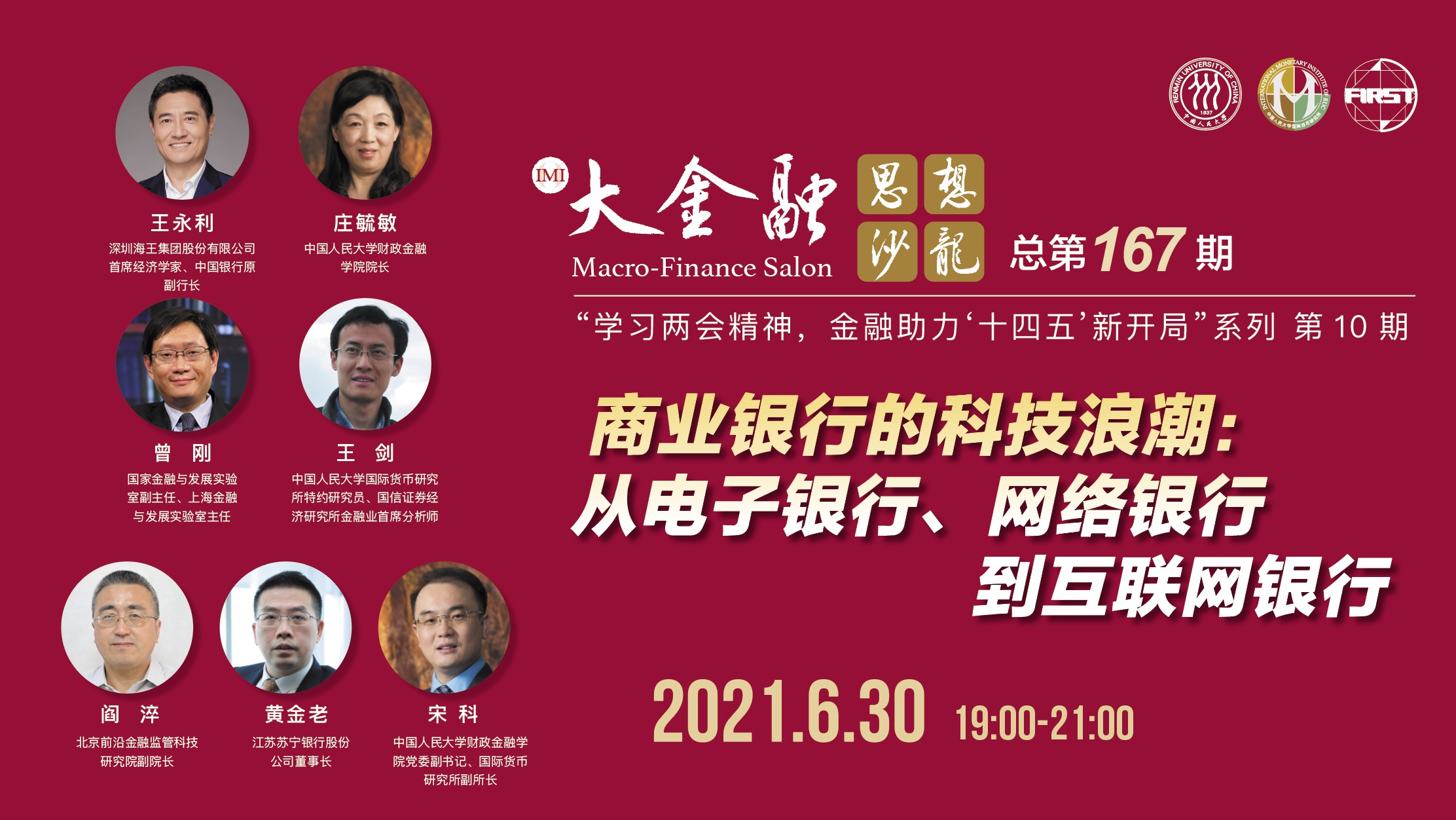Macro-Finance Salon (No. 167): Technology Waves Experienced by Commercial Banks
2021-06-30 IMI
On June 30, the Macro-Finance Salon (No. 167), co-organized by the International Monetary Institute (IMI), Renmin University of China (RUC) and Beijing Frontier Institute of Regulation and Supervision Technology (FIRST), was successfully held online.
Wang Jian, Senior Research Fellow of IMI reported on Technology Waves Experienced by Commercial Banks. Dr. Wang Yongli, Chief Economist at Neptunus and Former Vice President of Bank of China; Huang Jinlao, Chairman of Board of Suning Bank Co., Ltd.; Prof. Zeng Gang, Deputy Director of National Institution for Finance & Development and Director of Shanghai Institution for Finance & Development; and Yan Cui, Associate Dean of FIRST, made comments on this report. The salon was presided over by Song Ke, Deputy Secretary of CPC, School of Finance, RUC and IMI Deputy Director.
Firstly, Wang Jian delivered a keynote speech titled Technology Waves Experienced byCommercial Banks. He reviewed Chinese commercial banks’ past and status quo,shed light on models of Internet lending, the use of big data in online lending and features of Internet banks’ financial indicators, and shared his outlook for the banking industry. The key points are as follows:
The development of fintech in Chinese commercial banks has undergone three stages. First, the era of e-banks which started in the 1970s.The efficiency and accuracy of financial transactions was improved at this stage. Second, the era of network banks. During this period, banks were able to serve massive retail clients but opening accounts or onlinelending were still not available.Now we’re at the third phase—the era of Internet banks. The biggest breakthrough is the use of big data in Internet lending in between 2012 and 2014.
Internet lending has two models. One is the exclusive-client model, whichenjoys enormous data and traffic because most of its clients are fromshareholders’ Internet platforms and communities. Nonetheless, the model mainly serves existing shareholders and clients andis therefore not quite scalable. The other is the inclusive-client model, which provides loans accessible to all clients and is therefore more scalable.
The use of big data in pure online lending has three core modules. First, analysis of repayment intention, or an anti-fraud system. This modulehelps prevent fraudulent loans by analyzing clients’ repayment intention. Second, analysis of repayment ability, or big data for risk management. Third, a cost optimization system.
Profound influence on banking and the outlook for the banking sector. Internet lending can enlarge target clients and force traditional banks to enter these sectors. However, negative impacts cannot be ignored.For example, lending to wrong people would cause problems. The government should promote the application of big data to credit investigation to further reduce big data cost and improve the maturity of the credit investigation model.
Later on, in the discussion, the participants made inspiring comments on the reportfrom perspectives of the necessity of commercial banks’ transformation, the influence of risk management capability on banks, the impact of digitalization on commercial banks, and the role of technologies in finance.
